Now THAT Was a Bike: Whyte PRST-1
Imagine a time when few people understood the fundamentals of mountain bike suspension (including those who manufactured it) and fewer still understood the metrics that made bicycles handle and steer correctly. Now, if you can, bend your thoughts further. Conceptualize a mountain bike community with minds flexible enough to embrace a bicycle that didn't look anything like a Trek Session - or any other mountain bike, for that matter.
Whyte's PRST-1, with its aluminum monocoque chassis and articulated linkage fork, would be passed off by most of us as a one-off trade-show concept bike. In fact, it enjoyed a successful production run and earned a number of victories in competition along the way. Thousands were sold, but its zenith would be brief.
The design was penned and "prototyped" using Meccano toy parts and rubber bands while engineers Jon Whyte and Adrian Ward were holed up at Taipei's international airport, waiting out a massive typhoon in 1997. Staving off boredom, the pair outlined the three detrimental issues of telescopic forks at the time and challenged each other to come up with a solution. By the time the storm lifted, they had a working proof-of-concept linkage fork - the first steps of a three-year odyssey that would spawn a bicycle brand and challenge the industry to resolve steering issues that would linger on for another 15 years. Whyte Bikes' Ross Patterson tells the story:
The design was penned and "prototyped" using Meccano toy parts and rubber bands while engineers Jon Whyte and Adrian Ward were holed up at Taipei's international airport, waiting out a massive typhoon in 1997. Staving off boredom, the pair outlined the three detrimental issues of telescopic forks at the time and challenged each other to come up with a solution. By the time the storm lifted, they had a working proof-of-concept linkage fork - the first steps of a three-year odyssey that would spawn a bicycle brand and challenge the industry to resolve steering issues that would linger on for another 15 years. Whyte Bikes' Ross Patterson tells the story:
Whyte PRST-1: From Concept to Production
As told by Whyte Bike's Ross Patterson
While stuck at an airport in Taipei during a typhoon that had grounded all flights (circa 1997), mountain bike designers Jon Whyte and Adrian Ward had plenty of time to discuss the shortcomings of the current batch of available front suspension forks. They made a list of what they believed were the three main issues: flex, stiction, and loss of trail under compression. Their discussions led to a concept model made from Meccano and rubber bands, built on a table at the airport. It was a long typhoon.
When they finally did get home, they were hooked on the idea, and serious discussions about how to build a prototype were underway. They’d concluded that a linkage fork design that ran on sealed, full-complement aerospace bearings and paired with a reliable and consistently functioning Fox suspension damper (more commonly seen in the rear suspension), would offer huge gains in function and all-important, long-term performance and reliability. They anticipated a lifetime warranty.
The design and prototype work was carried out by Jon and Adrian, both having considerable Formula-1 experience, and later backed up by Nic Burridge. The prototypes were developed and tested, and they proved to be so much more superior to contemporary telescopic suspension forks that it was hard to resist pushing the button on series production. Those initial forks had virtually no lateral flex, no stiction and even at full compression, no loss of trail.
The design and prototype work was carried out by Jon and Adrian, both having considerable Formula-1 experience, and later backed up by Nic Burridge. The prototypes were developed and tested, and they proved to be so much more superior to contemporary telescopic suspension forks that it was hard to resist pushing the button on series production. Those initial forks had virtually no lateral flex, no stiction and even at full compression, no loss of trail.
Whyte Bikes is Born
We offered the design to Marin (as we designed all their suspension bikes at that time), but they decided against it. Without an OE customer, we decided to go it alone, create our own brand and bring it to market. Whyte Bikes was born.
At this point, the enormity of the task of commercializing the bike was laid bare, and an experienced manufacturing engineer, Andy Jeffries, was hired to work with one of the finest Taiwanese factories at that time to understand and manufacture the frames. Unquestionably, the lessons learned at that time by Whyte and our manufacturing partners are still being felt today in what would become a career-defining project for all those involved.
The bike was definitely a ‘form follows function’ design exercise, and the unique aesthetic was quickly compared to ‘Preston’, the mechanical robot dog in the animated films of Wallace and Gromit. The nickname stuck. We abbreviated it to PRST-1 for production.
Unlike many other radical and off-the-wall bikes, both PRST-1 and later PRST-4 were commercially very successful. Over 2,800 PRSTs were sold. Rave reviews and critical success followed, as did multiple race wins and Endurance championships. The development of the concept continued and PRST-1,
Unlike many other radical and off-the-wall bikes, both PRST-1 and later PRST-4 were commercially very successful. Over 2,800 PRSTs were sold. Rave reviews and critical success followed, as did multiple race wins and Endurance championships. The development of the concept continued and PRST-1,
Cut Short in its Prime
The end of our PRST project was decided by the successful introduction of the Fox Forx - a 32mm-stanchion, 100mm travel, hydraulically damped fork, that worked really well, was very reliable, and it overcame two of the three main issues that lead us to create PRST-1 in the first place: flex and stiction.
The epilogue of the PRST-1's story was that we had been doing research on the next iteration of the PRST linkage fork. It was a six-bar linkage designed to sustain anti-dive while still maintaining a fully active suspension.
The prototype was remarkable to ride. The amount of dive was tuneable, from pro-dive to anti-dive. Riding a bike with genuine 130% anti-dive was very strange. You could ride down a slope, haul on the just front brake and there was no dive from the front suspension at all. Then if you performed the same thing with just the rear brake, the front suspension would dive. Aesthetically, though, it was even more challenging to look at – but it was even more amazing to ride.
As for finding ways to maintain trail? That’s been a preoccupation of ours for over 20 years now, and it's recently come back into clear focus [industry wide]. We benefit from that now with our current reduced-offset designs, with which you are familiar.
The end of our PRST project was decided by the successful introduction of the Fox Forx - a 32mm-stanchion, 100mm travel, hydraulically damped fork, that worked really well, was very reliable, and it overcame two of the three main issues that lead us to create PRST-1 in the first place: flex and stiction.
The epilogue of the PRST-1's story was that we had been doing research on the next iteration of the PRST linkage fork. It was a six-bar linkage designed to sustain anti-dive while still maintaining a fully active suspension.
The prototype was remarkable to ride. The amount of dive was tuneable, from pro-dive to anti-dive. Riding a bike with genuine 130% anti-dive was very strange. You could ride down a slope, haul on the just front brake and there was no dive from the front suspension at all. Then if you performed the same thing with just the rear brake, the front suspension would dive. Aesthetically, though, it was even more challenging to look at – but it was even more amazing to ride.
As for finding ways to maintain trail? That’s been a preoccupation of ours for over 20 years now, and it's recently come back into clear focus [industry wide]. We benefit from that now with our current reduced-offset designs, with which you are familiar.
Author Info:
Must Read This Week
Sign Up for the Pinkbike Newsletter - All the Biggest, Most Interesting Stories in your Inbox
PB Newsletter Signup
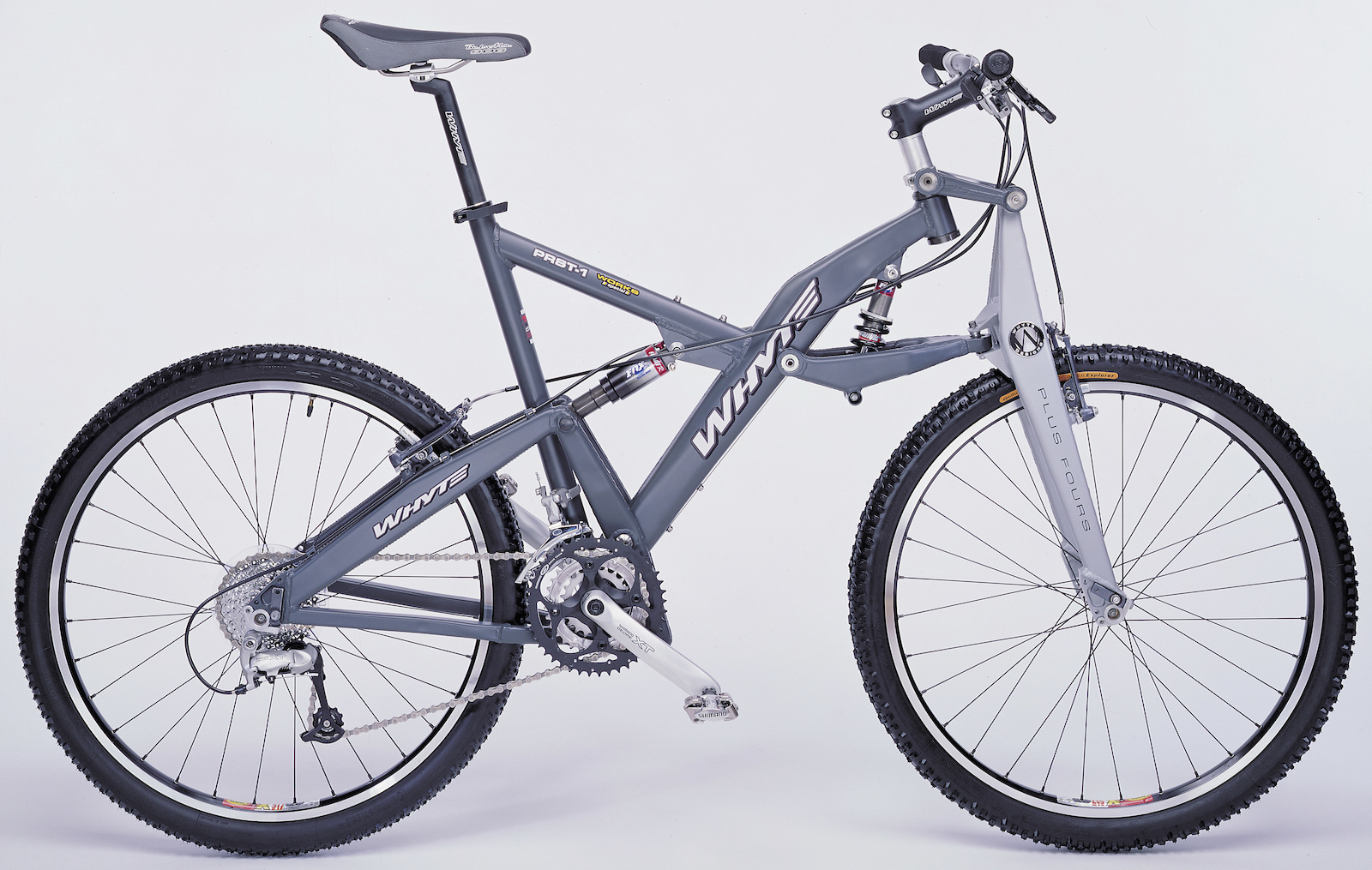
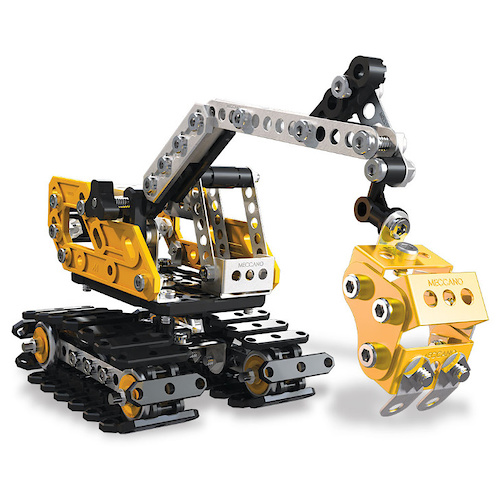
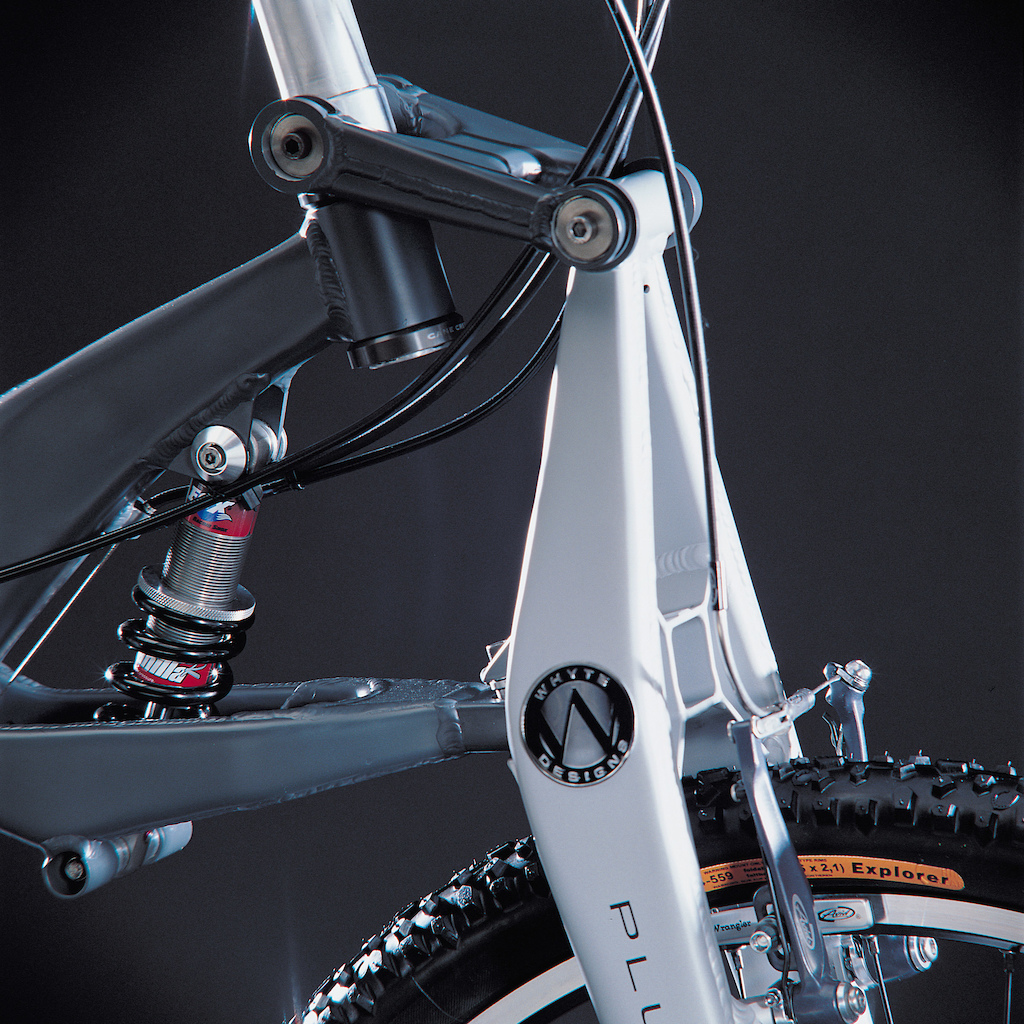
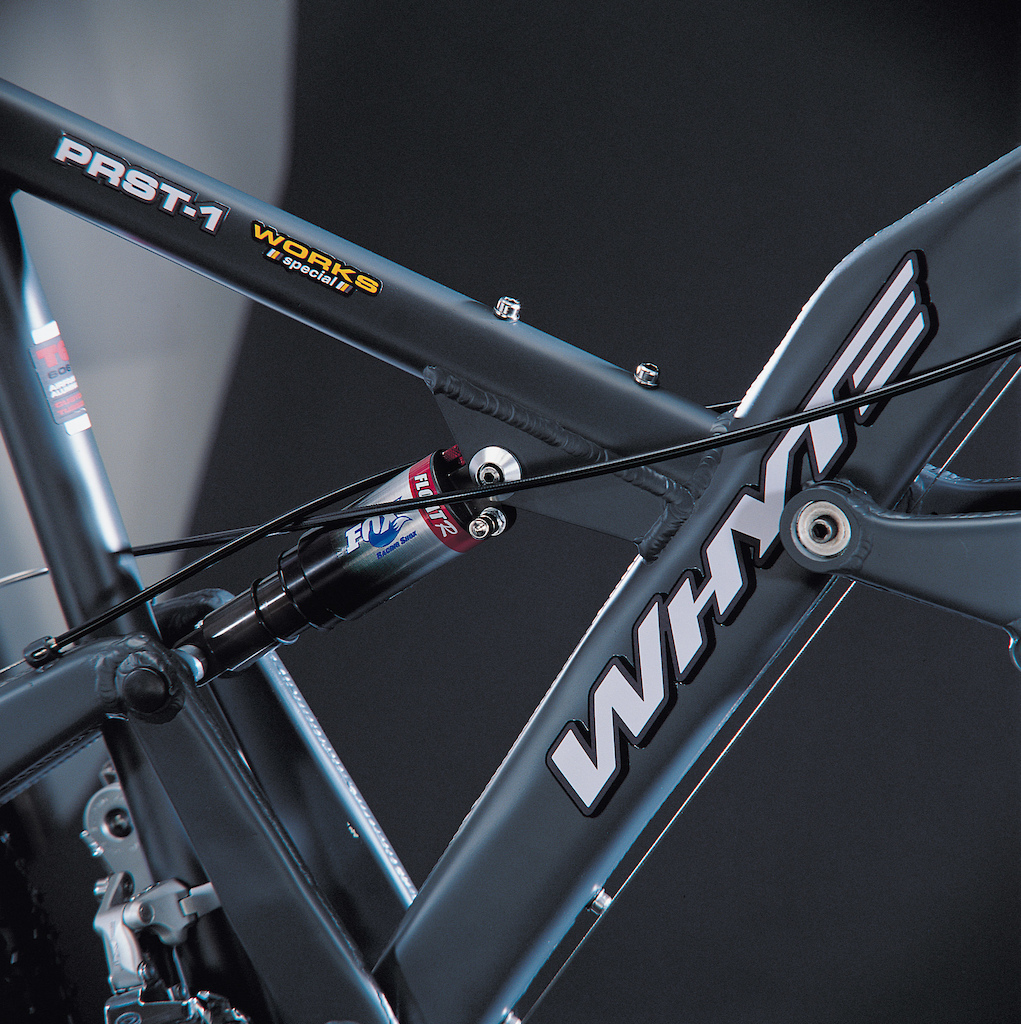
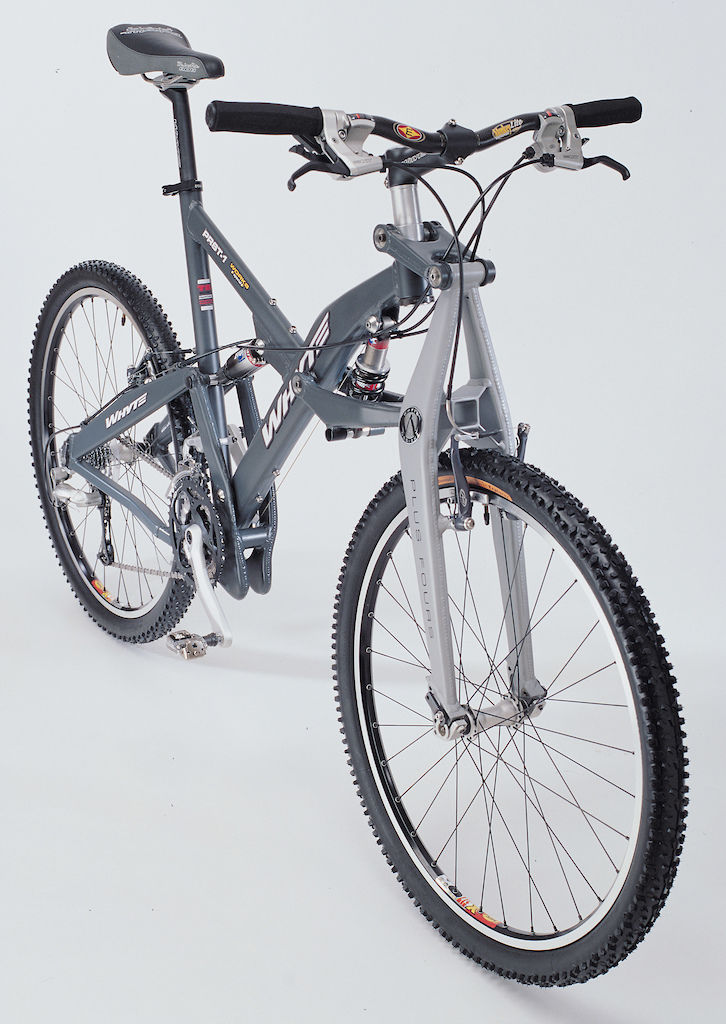
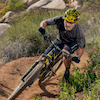
Come on PB staff, just buy one second hand for 100$, restore it and then show us how the suspension is working
They also had the ability to destroy the lower spherical bearing quicker than I can destroy a packet of Jaffa Cakes.
Scanning tunneling microscopes don't look like eyes, but if you want to get a look at the molecules you reference, my money is on the STM.
What you fail to see is that you are looking at a mutation that did not withstand the adaptation and competition with mutation of existing species, read: telescopic fork. You have evidence in front of your eyes, that a particular design was proven lesser.
This design is an evidently less efficient way of solving steering and suspension of a bicycle. A swingarm works well in one direction, if you add steering you immediately run into stiffness problem. That is because unlike car chassis, you have no width to play with. Car swingarms are often as wide as they are long. Which provides good chassis for the steering of the wheels. On a bicycle, the situaion is reversed. Steering provides chassis for suspension. Even if this design is successfuly utilized on a motorcycle, the potential proponent of utilizing it on a bicycle Is highly possibly unaware that widths on a motorbike are bigger since motorcyclists don’t need clearance for pedaling (with all biomechanics involved) and weight coming from amount of construction material is not an issue either.
The value of this design presents itself in providing physical evidence that telescopic fork design is superior design adressing steering and suspension of a bicycle.
Sorry...
As for a swingarm for steering, I don't agree with you that it is bound to lack stiffness. Both front and rear wheels are subject to lateral forces when cornering and there are quite few mountainbike designs out there where the rear wheel is connected to the front triangle through a linkage. A decade ago I recall seeing bikes from Marin and Whyte with their "Quad" suspension where the entire linkage reaches up to the front of the front triangle. Apparently it worked. Lateral forces on the wheel aren't that much higher for the front wheel. I've never looked into the steering moment transmitted through the headset but I doubt it is much compared to everything else. I think I push and pull more down onto the handlebars than that I apply a considerably moment around the steerer. If there were something to be skeptical about, it were the relatively long (axle to crown) single crown forks into a 100mm headtube we're seeing nowadays. But we've seen all that work out fine. Long linkages in the rear, long forks in the front. I see no reason to assume a long linkage in the front shouldn't work.
Yeah BMW has this on some of their motos, Harley Davidsons use it, it's just that none of these are doing flying laps at Monza or Annaheim SX course. Not even training laps, and if you did, you'd get punched in the face as soon as you stop in the paddock.
I'm not buying into the idea that "it is not being used there and there, so it is probably not good to be used here either." I'd rather see those from Structure.bike try and fail than not try at all. Though obviously I'd most rather see them succeed. I appreciate to see ideas and inspiration go between disciplines, but only in the positive sense. And it goes the other way around too. Sometimes it simply doesn't work. So they don't have a linkage fork in motocross. USD forks are common there. Yet in recent years we've seen so many companies experiment with USD forks for regular bicycles and it simply doesn't materialize. X-Fusion was supposed to have one, Fox experimented with it too, the RockShox fork is limited to XC (and getting less common at the top level). Even DVO seems to have gone back to "regular" lowers for their latest DH fork. I'm not saying that USD forks are bad. I'm just saying that motocross and bicycle riding are apparently so different that something that has proven to be the way to go in MX apparently isn't such a good idea on bicycles.
Either way, the new Structure bike will be released this fall. People (and testers from magazines in particular) will get it and ride it hard. Let's wait for that. If it fails miserably you can come back here and tell me "I told you so". If it holds up and performs as intended, let's pretend we didn't have this conversation, ok? Until then, it is undecided.
I love CR500’s, 2 stroke 3 wheelers, lefty forks, and all other mechanical oddities.
-Aside from the competition of that time…
We also have to consider the following.
-Do we judge this design as a bike or only as a fork? (Because the bike may handle poorly by other factors, like a high bottom bracket or a short wheelbase…)
-if we were able to tune the frame by today standards, would we have a better design overall? (A longer front end, short rear. etc.)
-What if we were able to add this fork, or even better an updated version of it, on a successful rear suspension system of our times?
You see?
Haters will hang from the overall performance of this bike, forgetting to compare it with the bikes of that era. They will also blame the fork for poor performance, forgetting that the bike does affect the handling in more than one way…
Also. This bike was not designed for DH! At least I, haven’t seen a dedicated DH version, even by the standards of that time, so we have to place this design within the boundaries of the style of ridding it was supposed to work. Otherwise is like comparing a long wheelbase DH bike of today with an ultra-light XC race bike, into climbing a long steep trail!
All these, strange to today’s kids, designs are products of the thought of people who loved what they did. They dared to experiment and their experience and knowledge have find its way to the bikes we ride today, one way or another…
We're grateful for the innovators who came before us and we've learned from the mistakes of the past, such as designing around an incomplete list of a kinematic variables, fragile pivots, and proprietary parts.
Given the same R&D as telescoping forks, linkage designs could be incredible. Current front suspension is good, but could be so much better, and linkages are the only way to create a step-change in front end performance. Now it's just a matter of realizing the potential while avoiding the (greater number of) potential problems. We're giving it our best shot!
Linkage forks can bring a real revolution in industry where some manufacturers would offer their ready-to-use linkage units while some bicycle frame designers will create their own suspension platforms. Wild 90's can come even stronger.
Even if we ignore what a linkage can do for dynamic geometry, a linkage can reduce friction by 95% at maximum braking load. That alone makes it worth pursuing - and the benefits to brake dive, trail, and front-centre length are even bigger prizes.
Someone will eventually come up with a front linkage that's superior in every way (except perhaps price). We hope it's us. Time will tell.
Yes, I totally agree (and I am following the evolution of your design). Your remark implies what’s happening with my design too! (PCT/GR 99/00031 WO 12376, EC classification B62K19/34,B62K25/28C, EP 1024994 or got to www.prototype.gr)I can see a number of bike manufacturers using floating BB suspension systems, just like my patented design, many years after my patent has expired. Just a number of manufacturers and the result is so interesting, many different approaches, more than I could have thought of…
Unfortunately no.
The patent process was really promising (after all the Greek patent office is part of the European patent office…).
But.
At the same time I was patenting GT bicycles in USA were registering their I-Drive design (although with a significant delay compared with my). So despite the high interest on my design, by various companies, the possibility to be “entangled” into a legal battle with the (then) mighty GT was a no-no.
Right now I am not covering the patent anymore. The annual expenses got proportionally too high for me. So basically now it is a free design…
Funny detail, only 2 manufacturers ignored my mail:
The Greek IDEAL bikes. They didn’t even bother to answer to my mail (despite the fact that at the same time I had a regular mail contact with some of the mythical names of the mountain bike scene… Imagine Cannondale answered within 24 hours!).
The other (back then) bike manufacturer colossus was Raleigh Bikes. They answered that a design of this kind would NEVER work properly…! (Tell that to GT I-Drive and all the clones of my system up to today…)
So,
Bad timing and the infamous Greek economic recession killed this project. I do have an evolved design in 2 versions (a gearbox one and a conventional transmission one, getting rid of the chain growth problem) in paper. Some of the parts already bought… It is a matter of time to build a new one, just for fun!
By the way, the prototype works wonderfully.
What is coming?
Makes me wonder - are we pretty much set on the "perfect" bike design at this point? (fork, couple of triangles, VPP/Horst etc to link them) Or is there scope for someone try to fix the thing that ain't broke with a radical new design? Not just Polygon Naild or something - I mean some crazy shit like this Whyte.
So,
At that era, this design was a better solution that the current telescopic forks. By comparing it with today’s standards it is quite unfair.
Also.
Imagine the evolution of this line of design, if it had the attention of the industry that telescopic forks had (and still enjoy)…
@aljoburr Not the end of the world without but I think it would be a nice addition, personally.
It doesn't require skill to make a GIF the GIF maker programs do it for you.
It does however require a series of images or a video from which to make the GIF.
In the absence of a video, images or a bike from which to create my own GIF I have requested one, not a huge ask.
In the past bikes on review have had suspension path GIFs made, often of fairly mundane typical suspension lay outs, not one of such a unique nature as this one.
What upset you so much about this comment?
Although I don't have the CAD files, I've done three simulations with excellent agreement between them.
Yes, the PRST did dive, and not only due to brake dive. The braking was well over 100% pro-dive at the start of the stroke (compared to about 30% pro-dive for telescoping forks) and rose to around 100% anti-dive at bottom-out.
The second part of the problem was the leverage curve. Most modern bikes are about 10% to 50% progressive, meaning the spring rate becomes increasingly stiff (due to the linkage, not the shock) by that amount as it compresses. The PRST leverage curve was inverted: it became softer by about as much as a highly progressive bike becomes stiffer. No wonder it used every millimeter of its travel on every impact! It certainly was plush, though.
This is, and always will be a sticking point to improved designs; does it look good. Ultimately, myself included, I want to ride something that just looks like a bike should look.
For some reason, telescopic forks just look right, as do round headlights on cars, and car wheels with 5 or more spokes.
At our days, it seems that anything that does not look like a session (or have 3 water bottle mounts), has to be destroyed. This is quite unfair. Just give the chance to those designs to evolve, mechanically AND aesthetically.
To support my position I will also add this:
For those (especially spoiled brats) who were not there, when our sport started, when the first suspension systems fought their way to the norm (and fought really hard), just do that following 3:
1) First run a search on the magazines of the early mountain bike era. You will be amazed to discover that there was a very negative stance over suspension forks and even more over full suspension bikes! If the frame was consisted by wider tubes than the (back then) norm, it was an abomination, it had to be killed with fire…
The first suspension fork companies had to fight their way against all these “experts” ho were judging looks by their… roadie tastes!
The same people now, at the same places (as… experts) are defending the same aspects that were rejected by their expertise back then… (WOW).
2) Then. Take a minute and check the early suspension era on mountain bikes. All the much known label products started with problems. Early Marzocchis were dripping oil everywhere! (The joke was that you may find were a Marzocchi went by following the oil drips!!!). Rock Socks were exploding their suspension leg ups (made from plastic), and had to deal with temperamental elastomer units. Manitou had to deal with their own problems and so on….
All those, dependable now, products had a rough start with lots of problems and lots of rejections from the, so called back then, exerts…
The same principle applies on all the aspects of modern mountain bikes! Check the chaos or the early geometry issues. If you check carefully, you may find here and there voices telling that the long (and very acceptable back then – always by the “experts”) stems are not the way to go! Some people (I am one of them) were ridding longer bikes in order to use a very short (and hard to locate) stem! Make sure to check how gradually the stems got shorter and shorter, because of... what?
3) Now take a minute (or as long as you need) and compare the time and effort it took (and the money) to perfect the telescopic fork of today. How many companies, aftermarket manufacturers, versions of products, models, etc., to reach today’s standards. And how those standards, even the aesthetic ones, changed along!
IMAGINE now, if the same effort was directed towards the link forks! How many, different and refined designs we would have now to choose from.
Also.
I’ve seen that many people compare the Whyte bike with today’s bikes, in order to ban it! But if you want to be honest you have to place this product among the competition of that era. You cannot blame this wonderful fork by the frame’s geo!
Reminds me of the pump action bike from South Park. Teehee.
That time is now, and it's worse than it ever was.
If you're reading, thank you. We hope we can pick up where you left off.
structure.bike
Sounds like an acronym for What a piece of Sh%t One